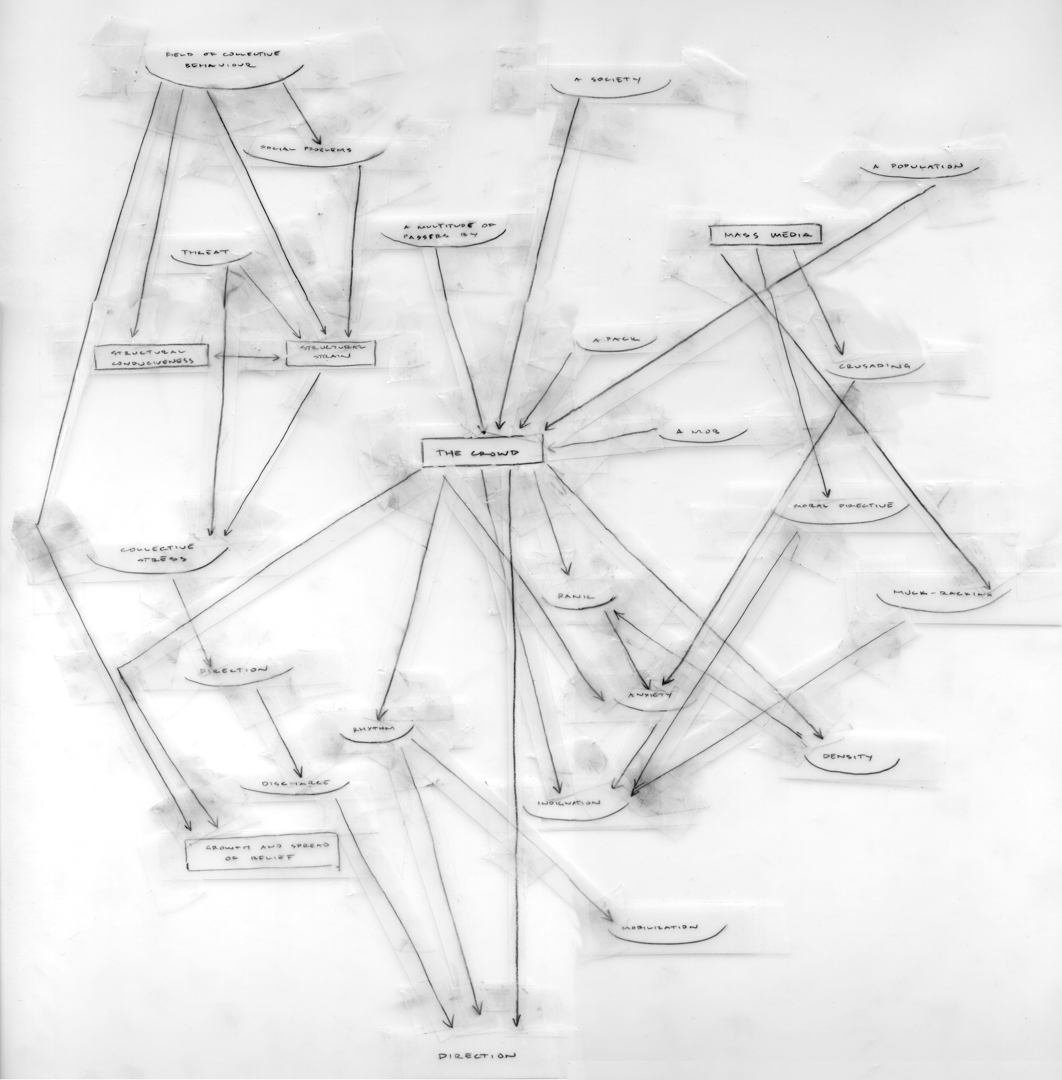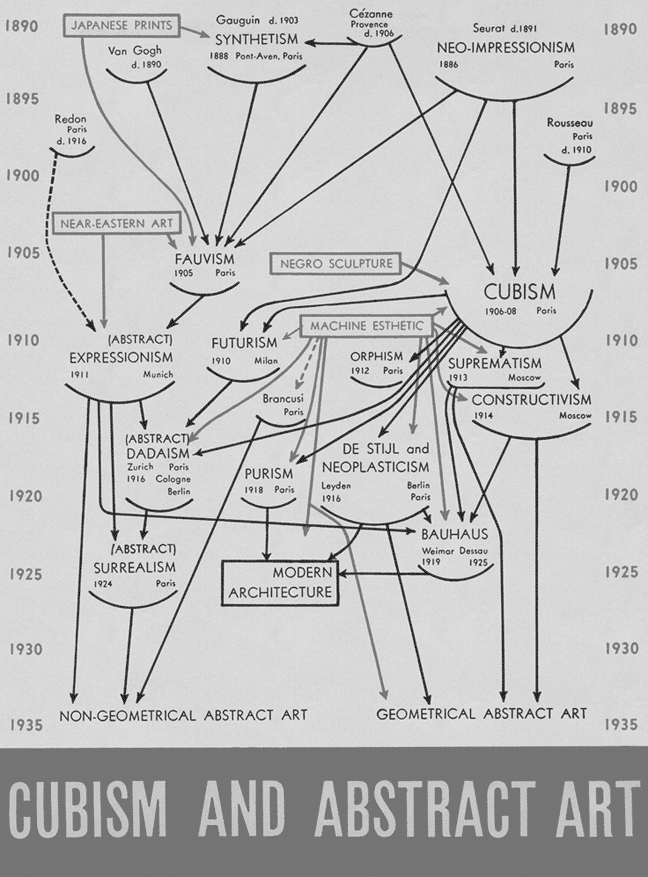Profiler – Aaron Kreisler

Dane Mitchell
2007
Courtesy Starkwhite Gallery
Reproduced on the back cover of The National Grid #4, Dane Mitchell’s Crowd Diagram (after Barr Jr.), 2007, stands in for a number of flow charts that the artist produced for his Barricades show at Starkwhite, Auckland, in Nov–Dec 2007. Represented here as a page work, once more isolated from the original series, an inevitable question arises; what does this drawing illustrate that the others don’t? Maybe it is a simple way of acknowledging the previous issue; the page work becomes the way finder and reminder of this periodicals lineage. However, I would like to believe that this reappraisal is in fact a more pointed reference to the original source for Mitchell’s work; the famous diagram by Alfred H. Barr, Jr., which was used for the dust-jacket of the catalogue for a 1936 Museum of Modern Art exhibition Cubism and Abstract Art.

The original diagram laid out the genealogy of modern art, according to Barr, the first director of MoMA (1929–1943), becoming in many respects an ideological blue print and art historical talisman in the legacy of that art organisation. While it would be easy today to read this diagram as the over confident assertions of a young director/ curator, who was trying to construct a simple pathway through the disparate and eclectic elements of modernism, particularly when it was produced on the cusp of America’s rise as a political, financial and cultural superpower, this interpretation would fail to acknowledge the context/situation in which this diagram was produced. An academic who was lured into the gallery world, Barr had sought to generate an exhibition about abstraction since he took the helm at MoMA, which reflected the changing dynamic of this key theoretical/visual thread in contemporary art. In keeping with these principles Barr sought to produce an exhibition and publication (the 249 page catalogue was written, laid out (by Barr) and printed in six weeks), which brought audiences up to speed with a range of art tangents in a coherent and comprehensive manner. As he noted in correspondence in October 1943: “During the first dozen years of the Museum I edited practically everything that the Museum published... I have, through prefaces, reports, bulletin articles, editing and Museum Collection labels... tried to present the Museum’s policies and achievements, the continuity of exhibitions and publications, the importance of its collections with precision and enthusiasm... [A]s Director I... had general responsibility for the standards of the Museum’s publications.”1 On reflection this chart is more a speculative guide than teaching aid, it was designed to elucidate certain art historical threads rather than determine (canonize) a new academic order. It fitted within a larger scheme that Barr was mapping out through his position at MoMA, which strove to present, unpack and elucidate the major tenets of contemporary and modern art, and in the process became the model/standard for other art museums to follow.
In Mitchell’s hands the original Barr chart becomes a useful guide for him to sample and rework, so that he can unpack ideas about the formation, channeling and distribution of power through various groups in society. In the context of the Barricades project this diagram proffers a set of options for audiences to think about this web of influence, which can be read onto or alongside the other elements in the exhibition. The rough and sketchy quality of Crowd Diagram (after Barr Jr.), may be a far cry from the neatly composed and rendered Barr original, but it still retains the one-way flow of influence and the teleology of the source document. At its heart there is a rye sense of humor at play in Mitchell’s appropriation, as avant-garde circles and art movements are replaced by an analysis of crowd behavior and social networks: an art historical framework is utilized by the artist so he can shine the light on modern and contemporary socio-political situations.
Footnotes
Rona Roob, ‘Alfred H. Barr, Jr.: A Bibliography of Published Writings’,Defining Modern Art: Selected Writings of Alfred H. Barr, ed. Irving Sandler and Amy Newman. Harry N. Abrams, New York, 1986. p.274. ↵